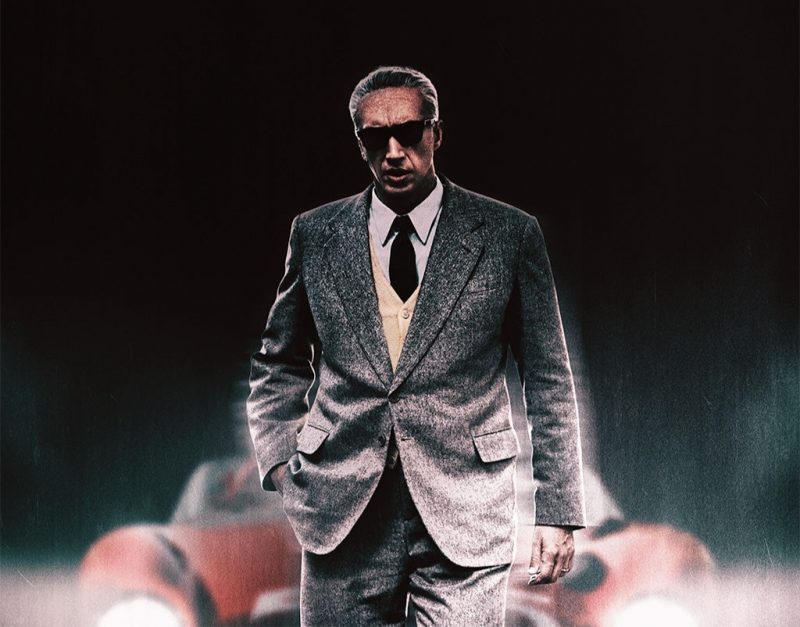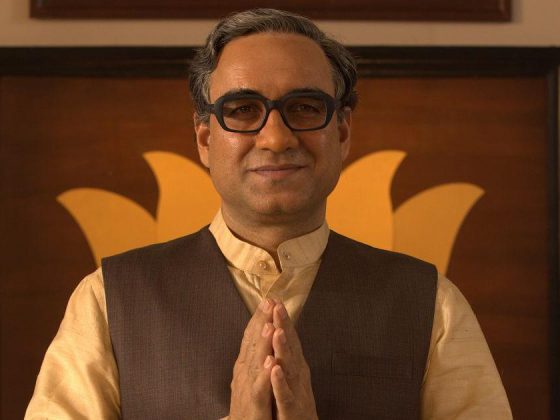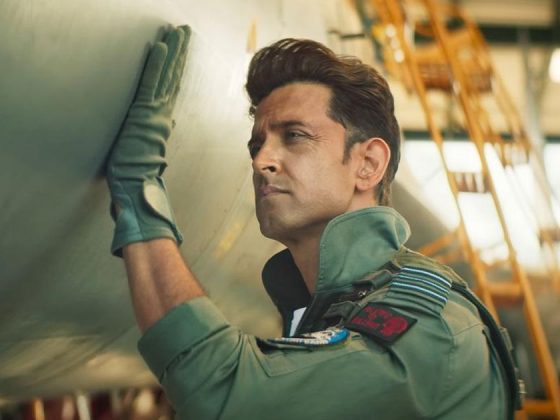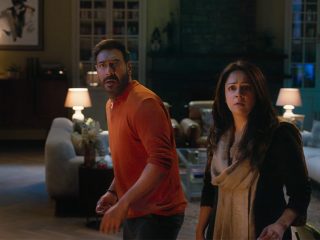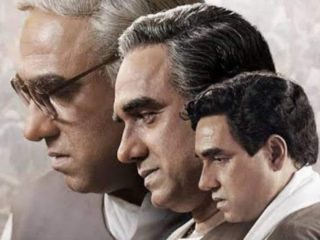The “Mann Men”—the tall, handsome outsider, an intensely romantic individual, as proficient in spouting philosophy and bathing themselves in cynicism as they are in their process-oriented manic energy, which pushes them to measure the limits of control—is a unique form of masculine characterization that, for better or worse, is the signature style of Michael Mann. Mann recontextualizes Enzo Ferrari, the founder of the eponymous automobile racing brand, as one of his most unique protagonists.
This isn’t Mann’s first rodeo in terms of the “true story” or the “biopic” template. We have “Ali,” “The Insider,” and even “Public Enemies,” where Mann dabbled in notable events of history and of the “great men” of that era. “Ferrari,” from a screenplay by the late Troy Kennedy Martin, is delving into interesting territory. Rather than go into a historical narrative about Enzo, the growth of the Ferrari brand, and his own tenets about racing, Mann wisely chooses to focus on the period in 1957, when Ferrari, with his company on the verge of bankruptcy, has to join the Mille Miglia and risk winning, such that offers for his automobile could come through, with an influx of additional capital that would extract his company out of the pits.
Ferrari is also dealing with complications in his personal life, where a strained marriage with his wife Laura (Penelope Cruz) is complicated because Laura has a majority stake in the company, and Ferrari has to manipulate and battle with her verbally to gain control. All the while, his mistress Lina Lardi (Shailene Woodley) pressurizes him to grant their son Piero the Ferrari name on the day of his confirmation.
As far as “Ferrari” is concerned, there is a risk of the movie becoming very process-oriented and dependent on the story of how the brand saves itself from insolvency by winning the Mille Miglia. When that movie is playing, “Ferrari” is firing on all cylinders. The machinations Ferrari has, in terms of selections of racers, his tenets about racing, about two objects unable to occupy a fixed space and time and thus a decision needs to be made to topple the other object, or the planning he would have to make to ensure that the company remains afloat.
That movie also comprises the racing sequences, which, in Mann’s hands, aided by cinematographer Erik Messerschmidt, look spectacular. Mann’s propensity for perfection and realism extends to the sound design as well, especially of the engines of these cars and the grinding of the gears as they turn, loudly protest, and drive through again.
The other movie that is interlinked is the personal plot of Enzo Ferrari, where the movie truly wobbles. There are moments between Enzo, Laura, and Enzo’s mother that would remind you of watching a telenovela, if one gauges the humor. It doesn’t help that Mann chooses to cast American actors like Adam Driver and Shailene Woodley (even Patrick Dempsey in a minor role) and have them saddled with Italian accents. Shailene Woodley is the worst offender of that bunch. However, this entire plot and dynamic are carried through by the chemistry between Driver and Cruz.
Cruz especially gives one of the finest performances in this ensemble, with closeups of her face depicting her breakdown over the loss of her son evoking more than the screenplay possibly could on the page.
But Ferrari doesn’t work as a perfect mold for these two differing narratives. There are moments where the movie feels like it is lingering too much on one specific interstitial element to be completely focused on the story it wants to tell. Driver accompanies his “House of Gucci” Italian accent with him, but unlike the camp sensibility of that film, it becomes passe once the narrative settles down. However, beyond the depiction of the “Mann Men” tropes in Driver’s portrayal of Ferrari, there isn’t further depth granted to the character. While the story itself could be inaccessible to an audience only expecting a racing picture like “Ford vs. Ferrari” or “Rush,” the dramatic elements don’t cohere as effectively as one expects the best of Mann movies to become.
One of the big flaws that could be attributed to “Ferrari” is its ending, which follows the aftermath of an accident in the Mille Miglia. The CGI used to depict that accident is dodgy, though Mann sets up that accident quite well, both through the perspective of the driver with a narrowing of perspective as well as the hapless victims, which comprises of villagers eager to witness the endurance motorsport. But Mann’s depiction of how that accident affects both Ferrari—the man and the brand—feels a tad bit hastily thrown together. His animosity with Laura, too, just ends. For a movie about the existence of drama—both the interior and the exterior—depicting the Man(n)’s duality, the co-existence feels out of sync, leading to the sputtering of the engine of the narrative as it reaches the finish line.

